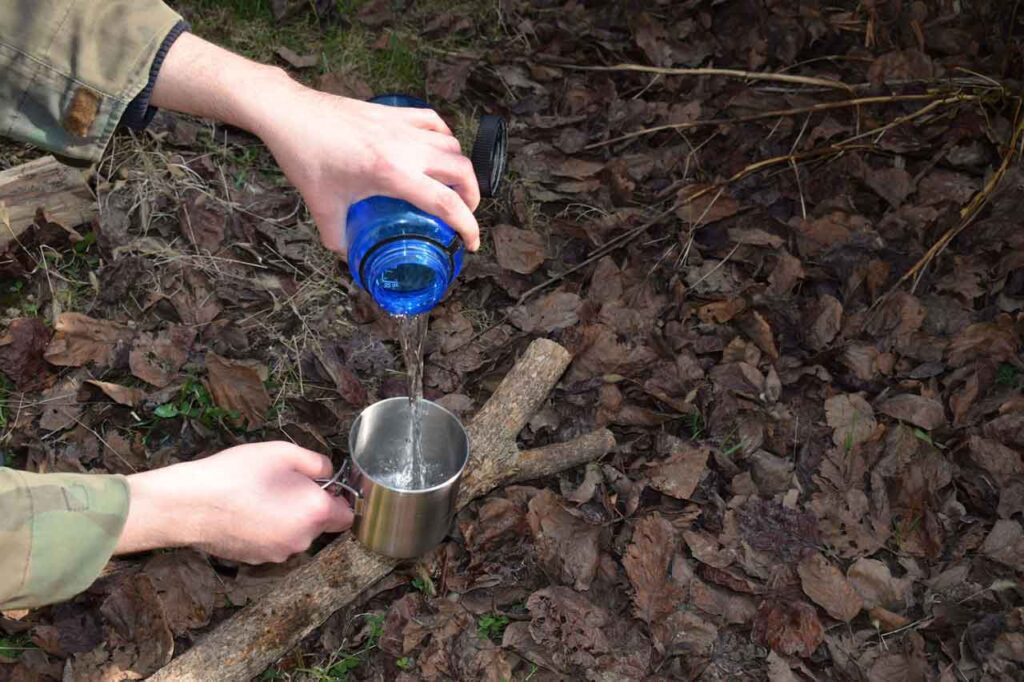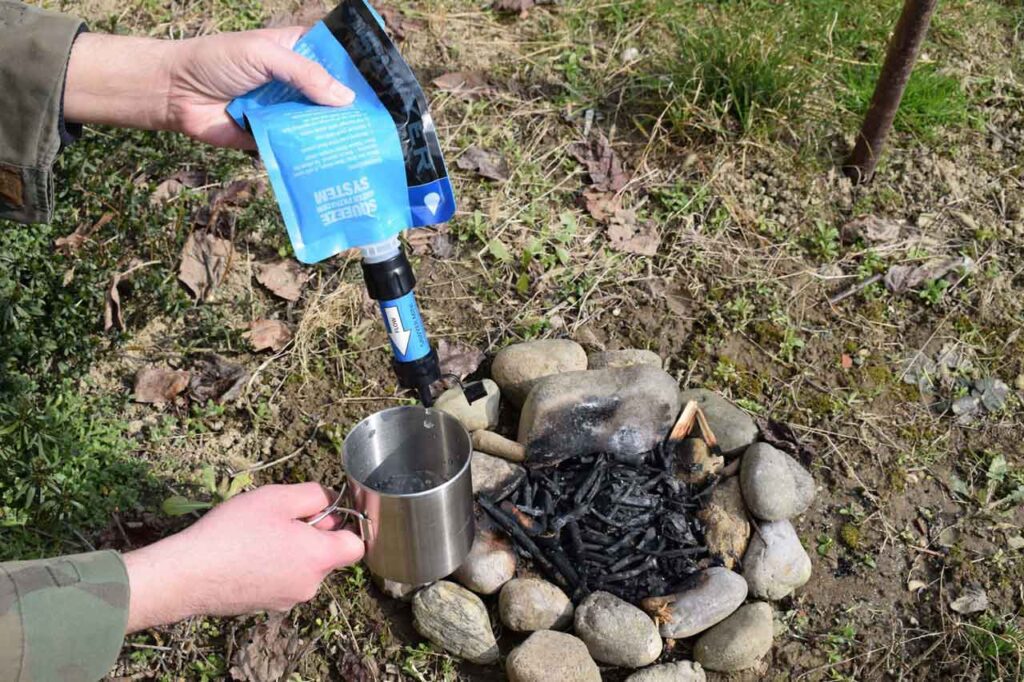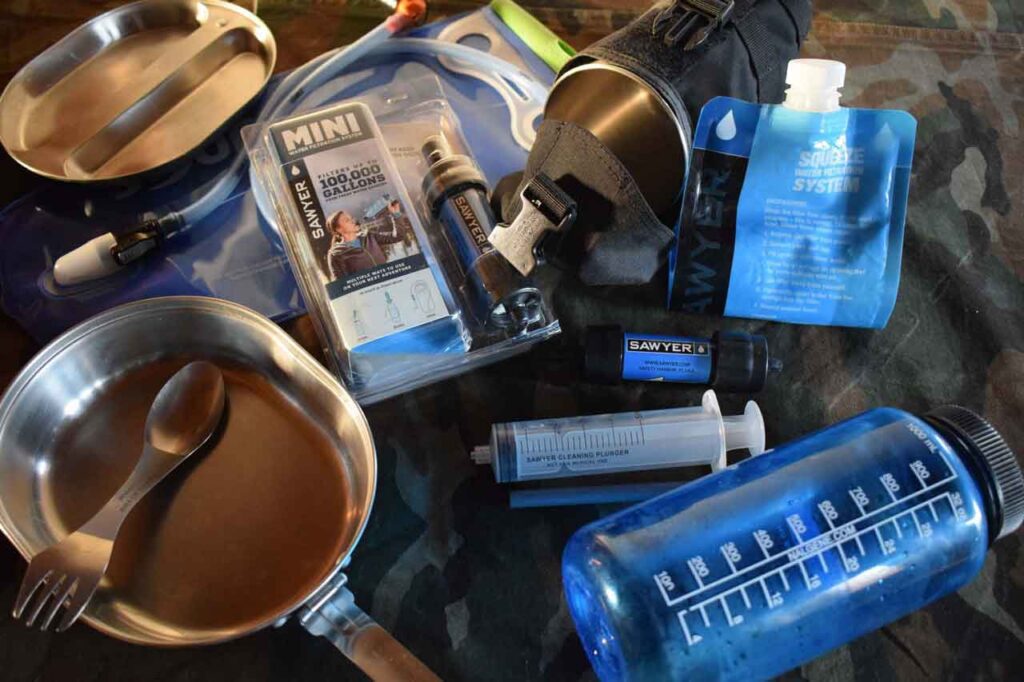Water Purification in a Survival Situation
Water Purification in a Survival Situation, water will be one of your top priorities. The majority of people are under the impression that they can run to a river, lake, or oasis and just gulp down the nice cooling water. A myth perpetuated by the movie industry. Sadly this is not the case, and could potentially be life-threatening.
Any water you find will most likely be contaminated with viruses, bacteria, or parasites (if you are unlucky all three). All drinking water needs to be purified in some manner or other.
Water Contaminated by Chemicals
Water contaminated by chemicals would most probably be beyond a survivalist’s abilities to purify and should be avoided. If you suspect that the water is chemically contaminated by the smell, taste, or maybe you have a strong suspicion that it is chemically contaminated, look for another source of water.

Is rainwater safe to drink?
In some parts of the world, people drink rainwater on a daily basis, but that doesn’t mean that it is safe. Rain usually has fewer pollutants than water that is on the ground, but that does not mean it’s 100% safe. As rain falls it could potentially become contaminated with pollen, chemicals, germs, etc. Unless you are in dire straits (life or death), always purify rainwater before drinking. Actually. Let me rephrase that, always purify ALL water before drinking just to be on the safe side.
Is it safe to eat snow?
Eating snow depends on your location, like rain, snow can be contaminated as it falls. It can become contaminated as it lays on the ground (think yellow snow). That said, boiling snow generally makes it safe for consumption (pick clean white snow to purify).
What is the best way to purify snow?
Snow is an excellent insulator so it takes a little bit of work to melt. The best way to melt snow is to wrap it up in some clean material, like a shemagh or t-shirt, and hang it near a fire. The melted snow should then be boiled for 5 to 10 minutes. TIP: if you have a choice of melting snow or ice, ice is easier to melt. Another good way to melt snow for consumption is to add about 1 inch of snow in a container over a fire. As the snow melts keep adding a little bit of snow at a time to the pot. Do NOT fill a pot to the brim with snow and attempt to bring it to a boil, it will require more heat and time.
What is the best way to purify water in a survival situation?

Filter any sediment in water through some material (eg: T-shirt, bandana, shemagh) or get a dedicated survival water filter bag.
1. Roiling boil the water for a good 5 minutes (this is to be on the safe side, 2 to 3 mins is usually more then enough).
2. Use a water filter, a few of the top brands are Sawyer mini water filter, Lifestraw, and Katadyne water filters.
3. Use water purifying tablets like the katadyne Micropur MP1, Potable Aqua Chlorine Dioxide, or Aquatabs.
Here are a couple of other methods that are not quite as safe, but if the other options are not available, they can be used.
Using bleach to purify water.
Use only regular bleach ( do NOT use scented bleach or bleach for colored clothes), 2 drops per liter stir, and let sit for 30 mins. If the water is cold then add another 2 drops, stir, and let sit for another 15 to 30 mins. Smell the water it should smell faintly of chlorine.
Using Sunlight to purify water.
Filter the water from debris through a material, then put in a small plastic bottle in direct sunlight for 24 hours ( preferable size of the bottle is 500ml to 1 liter, larger bottles are ineffective).
Using iodine to purify water.
Common household 2% tincture of iodine, add 5 to 10 drops to every liter of water, stir, and let sit for at least 30 mins.
Distilling water to remove contaminants.
Distilling water is a more cumbersome method of purifying water, you will need 2 containers, fill one with water and bring to a boil, makeshift a way to funnel the steam to the second container.
Caveat: always filter water of sediments before purifying.

My Personal Favorite Methods Of Water Purification
I carry a sawyer mini water filter, some Katadyne water purifying tablets, and a metal cup to boil water. It’s always best to have a couple of methods to purify your drinking water. Pack a water filter and metal cup with your camping gear, with your bugout bag, in your car, when traveling. Water purification systems take up so little space in your bag, there is no reason you shouldn’t carry a few methods of making your water drinkable.
Methods that were ineffective for me:
Solar stills might be effective in some environments, but the amount I collected was barely enough to warrant the energy expended.
Surprisingly: in the summer, plant stills worked better for me, but required a large number of plastic bags.
I am sure there are methods I haven’t tried or even thought of, if you know of any, post a comment. I would love to learn new techniques.
Check out these sites if you are interested in some technical facts:
https://www.epa.gov/ground-water-and-drinking-water/emergency-disinfection-drinking-water
Caveat: Do NOT eat snow to stay hydrated, it will have the opposite effect, it will actually dehydrate you as your body expands energy to melt the snow in your system. It could also lower your core temperature to such a low level that you may suffer from hypothermia.